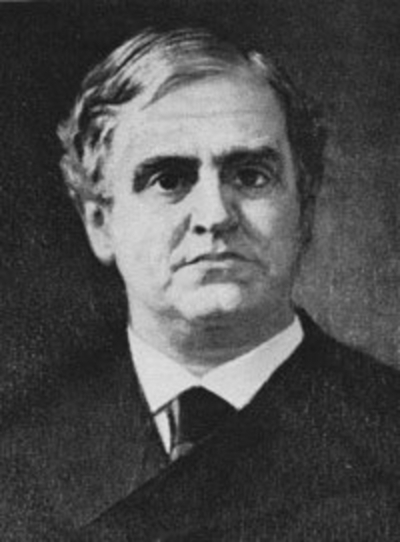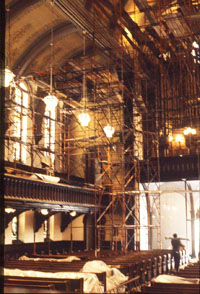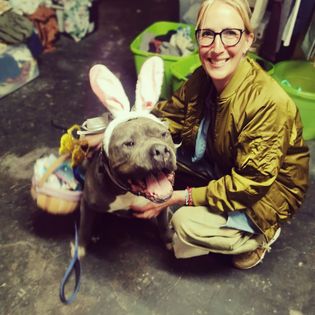THE CHURCH OF THE HOLY TRINITY

The Church of the Holy Trinity has gathered together in worship and service since 1857.
- We seek to be a joyful, holy, and healing place focused on connecting with God, our neighbors, and ourselves.
- We embrace the best parts of ancient Christian worship and prayer, while boldly serving the world in Jesus’ name. Whoever you are, and whatever your background, we open wide our doors to you.
- Whether you belong to a church, used to belong, or are walking through church doors for the first time, we are excited to welcome you. We invite all to participate in our programs and attend services.
- Please take some time to explore our website and learn more about this community.
THE CHURCH OF THE HOLY TRINITY
A HISTORY
BEGINNINGS
In keeping with its official name, The Church of the Holy Trinity, Rittenhouse Square, has always been closely linked with the life of its neighborhood in the heart of Center City Philadelphia. It was founded at the moment when urban development, which had moved westward from the Delaware River, reached the southwestern of the four squares laid out in William Penn’s original plan. A group of prosperous merchants and professional men first met in 1855 to plan formation of a new Episcopal parish near the square, which could serve as a community hub for the growing residential neighborhood. The founders, many of whom were Quakers and parishioners from neighboring Episcopal congregations, wanted to create a new church that followed simple liturgies and emphasize preaching, which was unique for the surrounding Episcopal churches in Philadelphia. The cornerstone was laid in 1857.
Because this was a new church, and not an expansion of an exisiting congregation, while the building was still under construction, they selected their first rector, The Rev. Alexander H. Vinton of Boston, a leading low church figure. Vinton began on November 28, 1858 by preaching morning and afternoon services in the Parish Building located directly to the west along Walnut Street. Inaugural services in the new church were held on March 27, 1859.
A HISTORY
GROWTH AND EXPANSION
Mid-nineteenth century America was a golden age of oratory, in which attending lectures, secular and religious, was a popular form of entertainment. Noted speakers were treated as celebrities. Vinton quickly attracted a growing congregation, and when he left for a New York parish, he was succeeded in 1862 by a young man destined to become one of the most prominent preachers of the age. The Rev. Phillips Brooks had attended Vinton’s Boston parish as a child. After graduation from Harvard College he attended Theological Seminary in Virginia. Brooks’ powerful preaching style and straightforward Christian message filled the large church at two and eventually three services on Sunday and evening lectures during the week.
The church became known as the parish of many of Philadelphia’s wealthiest and most socially prominent citizens, but congregants came from all classes. In addition, over time its Vestry assumed responsibility for several smaller congregations. The first of these had begun nearby as Cranmer Chapel, ministering to “the plainer classes of the population,” but was unable to support itself. In 1863 the Vestry agreed to take charge of the Chapel, renamed Trinity Chapel. In 1874 it moved to a new building at 22nd and Spruce. Funding came from family memorials to Anna Gertrude Wilstach and to John Bohlen and the new church was renamed as “Holy Trinity Memorial Chapel.”
In 1893, another mission was established at 23rd and Tasker; initially named The Chapel of Saint Faith, it was rechristened as The Chapel of the Prince of Peace in 1896. In 1914 a third, the Phillips Brooks Memorial Chapel, was founded at 1925 Lombard Street; it had its roots in a Sunday School for Colored People set up by the Rev. Brooks in 1867. In subsequent decades all three became independent parishes.
THE CIVIL WAR AND A FAMOUS CHRISTMAS CAROL
In the 1850s and 1860s political and social turmoil surrounding slavery and civil war touched Philadelphia deeply. Like many New Englanders, Brooks strongly opposed slavery and advocated active prosecution of the war against the seceding states. His convictions were not shared by all members of the congregation. Brooks’ eloquent sermons and lectures on the subjects brought him to national attention but also sparked the resignations of several prominent members. In particular, his powerful eulogy to Abraham Lincoln, preached on April 23, 1865, was reprinted and widely read.
Taking a sabbatical year after the war’s end, Brooks traveled to Europe and the Holy Land. He later wrote a poem for his Sunday School children, inspired by the memory of his visit to Bethlehem. For Christmas season in 1868, he asked the church’s organist Louis Redner to set it to music. The result, “O Little Town of Bethlehem,” soon took its place as one of the most beloved Christmas carols.
In 1869 Brooks returned to Boston to become rector of Trinity Church, later rising to Bishop of Massachusetts. Subsequently several of The Church of the Holy Trinity’s rectors – the Rev. Thomas A. Jaggar and the Rev. William N. McVickar – became bishops.

OUTREACH
Lay members of the church have always played an active role in the life of the congregation. During Brooks’ day, church members organized a night school held in the Chapel on week-day evenings and its ladies led a mothers’ group and an outside Bible class. Stalwart members like Lemuel Coffin and Louis Redner taught Sunday School for decades. In the 1890s, widening concern for the social as well as spiritual needs of the poor inspired new programs. Ladies of the Fresh Air Committee campaigned to establish a summer retreat for sick and poor parishioners of CHT and its mission chapels. In 1895 “Holiday House” was purchased in the Bucks County community of Sellersville. For a time the Chapel Guild also ran a laundry at 22nd and Lombard to provide employment for needy women.
A HISTORY
A NEW CENTURY
The Rev. Dr. Floyd Tomkins’ tenure from 1899 to 1932 was the longest in The Church of the Holy Trinity’s history; it saw the highwater mark of the parish in terms of size, as it reached nearly 3,000 communicants and an average Sunday attendance of 1200. A Bible class for women led by Mary Schott attracted over 200. Anthony J. Drexel Biddle took over the men’s Bible class in 1908 and, inspired by his eccentric vision of “Athletic Christianity” that included boxing instruction, launched a national movement. (Biddle’s story inspired the 1967 Disney film, The Happiest Millionaire.)
In the earliest days of radio, Tomkins recognized the new medium’s potential to expand the reach of the church’s message. The Church began broadcasting Sunday morning services over station WIP, enabling many who could not otherwise attend to take part in a church service. Holy Trinity continued to broadcast services until the program was discontinued by the station in 1964.
Nevertheless, much change in the twentieth century was not friendly to Philadelphia or to the church. Many of its most wealthy parishioners joined the general exodus to the suburbs. Gradually, the mansions that had once ringed Rittenhouse Square were replaced by apartment buildings, office buildings and hotels. The church adapted to changing times; under the Rev. Frank Salmon, membership was separated from rental or ownership of pews. The Rev. Harry S. Longley built up membership by emphasizing programs for young adults and young families. To allow for more social activities, a Centennial Room complete with kitchen facilities, was constructed in the basement in 1956.
RENEWAL
In the 1960s, The Church of the Holy Trinity faced declining membership and pledge revenues, but the church continued to be at the center of the Community, led by The Rev. Cuthbert Pratt. The memorial service for Winston Churchill in 1965 packed the church. The Rittenhouse neighborhood was changing quickly, and in order to shore up the financial state of the church, the congregation sold or leased several of its properties, including Holiday House. In 1968, A developer approached the church, with plans for a two story highrise with a new smaller church built in between, but the members rejected the proposal and retained the building. Under Pratt's leadership, the community made major renovations to preserve and enhance the beauties of its historic building, including the glass doors in the narthex. Pratt's work and care for the building will lay the foundation for growth and renewal that will follow. The Rev. John Smart continued this work, establishing the Historic Holy Trinity Preservation Trust. New outreach ministries were launched, including a “Ministry of Meals” to provide meals to the homeless, the homebound and people with AIDS. The Church also became host to Philadelphia’s chapter of Integrity, an organization advocating full inclusion of lesbian, gay, bisexual and transgender members in the life of the Episcopal Church.
These expansive and restorative efforts continued after 1999 under the Rev. Terence Roper, with additional renovation work and the beginning of a program called “Trinity Central” that opened the church sanctuary to the community for several hours each day. Growth and momentum continued under the Rev. Alan Neale, who opened the church to a broader range of ages and welcomed those who were not members to be married in the church, ushering in new families. In 2016, the church called husband and wife team, The Reverends Rachel & John Gardner, to be their Rectors.
THE CHURCH OF THE HOLY TRINITY
CONNECTING TO THE WIDER COMMUNITY
The Church of the Holy Trinity continually seeks to strengthen its ties and its usefulness to the wider community of Rittenhouse Square and Center City Philadelphia. In 2008 the church undertook an ambitious plan to reconfigure the chancel, to make the space more accessible for worship and more flexible as a performance space. As a result, use of the church by Philadelphia’s many performance groups has continued to grow. The church has been opened to and used by civic and community groups, neighbors, and afterschool programs from the local public schools.
In 2009 The Church of the Holy Trinity celebrated its Sesquicentennial, marking 150 years of continual worship and ministry in the church on Rittenhouse Square. The year of festivities included performances, lectures, and guest preachers, culminating in a birthday ball gala and a festival eucharist, at which the Most Rev. Katharine Jefferts Schori, Presiding Bishop of the Episcopal Church in the United States, was guest preacher and celebrant.
In 2017, we partnered with The Sunday LOVE Project to serve a sit-down meal in our Centennial Room on Sunday and Tuesday evenings and Monday mornings. In 2021, the Church took over the ministry, adding clothing distribution, and renaming the service Open Hearts Cafe. We serve around 200 people per week.
In 2023, the clergy and vestry created the vivid vision, with the aim to reconnect the church with and be a resource to the neighborhood. As we celebrate our rich and varied history, the church community continues to look forward with hope and anticipation to what the next 150 years will hold.







